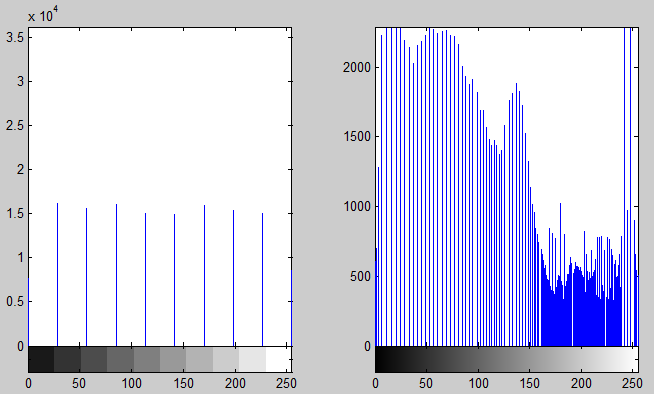I tried to do a histogram equalisation on an image, and then display its histogram. I realise that when I show the histogram with 10 bins, it looks more "equalised" than when I show the histogram with 256 bins. Here's is an image of the 10-bin and 256-bin histograms of the same image after running a histogram equalisation:

So again, in the image above, clearly, the histogram with 10 bins looks more equalised than the histogram with 256 bins. Since both the histograms reflect the colour pixels for the same image, is there reason as to why the 10-bin histogram looks more equalised than then 256-bin histogram?
